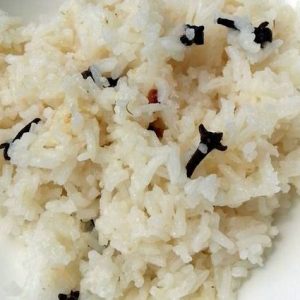Cilantro is a fragrant herb used in many dishes, but it tends to spoil quickly if not stored properly. Luckily, there are a few simple methods to preserve cilantro and keep it fresh for months, ensuring you always have this herb on hand when you need it. Here’s how to do it:
Method 1: Freezing Cilantro in Ice Cube Trays
Freezing cilantro is one of the best ways to preserve its flavor for an extended period. By freezing it in ice cube trays, you can conveniently use portioned amounts for cooking.
What You’ll Need:
- Fresh cilantro
- Ice cube tray
- Olive oil or water
- Freezer-safe bag or container
Instructions:
- Wash and Chop the Cilantro: Rinse the cilantro under cool water to remove any dirt or debris. Pat it dry with a clean towel or paper towels. Chop the cilantro finely.
- Fill the Ice Cube Tray: Place the chopped cilantro into the sections of an ice cube tray, filling each one about halfway.
- Add Olive Oil or Water: Pour olive oil or water over the cilantro in the tray, just enough to cover the herb. The oil or water helps preserve the freshness of the cilantro and prevents freezer burn.
- Freeze: Place the tray in the freezer and let it freeze completely, typically overnight.
- Store in a Freezer Bag: Once frozen, pop out the cilantro cubes and transfer them into a freezer-safe bag or container. Label the bag with the date, and store it in the freezer. The cilantro cubes can last up to 3-4 months in the freezer.
- Use When Needed: Whenever you need cilantro, simply pop a cube into your dish while cooking. If using oil, it will also add flavor and richness to your meal.
Method 2: Drying Cilantro
Drying cilantro is another way to preserve it for months. While drying may slightly reduce its vibrant flavor, it’s still a useful method for long-term storage.
What You’ll Need:
- Fresh cilantro
- Paper towels or a drying rack
- Airtight jar or container
Instructions:
- Wash and Dry: Rinse the cilantro thoroughly under cool water and pat it dry with paper towels.
- Air Dry: Lay the cilantro bunches on a drying rack or tie them in small bunches and hang them upside down in a well-ventilated area. Let them air dry for 1-2 weeks, depending on humidity levels, until the leaves are completely dry and crumbly.
- Store in Airtight Container: Once the cilantro is fully dry, crumble the leaves and store them in an airtight jar or container. Dried cilantro can last up to 6 months when stored in a cool, dark place.
Method 3: Blanching and Freezing
Blanching cilantro before freezing helps preserve its bright green color and freshness.
What You’ll Need:
- Fresh cilantro
- Boiling water
- Ice water
- Freezer-safe bag
Instructions:
- Blanch the Cilantro: Bring a pot of water to a boil. Submerge the cilantro in the boiling water for about 10-15 seconds.
- Cool in Ice Water: Immediately transfer the blanched cilantro to a bowl of ice water to stop the cooking process. Leave it in the ice water for about 30 seconds.
- Dry and Freeze: Pat the cilantro dry with a towel. Place the cilantro into a freezer-safe bag, remove as much air as possible, and seal the bag. Store it in the freezer for up to 4-6 months.
Method 4: Cilantro Paste
Turning cilantro into a paste can preserve its flavor and make it easy to use in recipes.
What You’ll Need:
- Fresh cilantro
- Olive oil
- Blender or food processor
- Airtight container or freezer-safe bag
Instructions:
- Blend the Cilantro: Add cilantro to a blender or food processor and drizzle olive oil over it. Blend until smooth.
- Store in a Container: Transfer the cilantro paste to an airtight container or freezer-safe bag. Press out the air, seal it tightly, and freeze.
- Use in Cooking: The paste can be used directly from the freezer in soups, sauces, or stir-fries. This method keeps cilantro fresh for up to 6 months.
Conclusion:
By using these methods, you can preserve cilantro for months without worrying about it going bad. Whether you prefer freezing, drying, or making a paste, these techniques will help you enjoy fresh-tasting cilantro in your cooking whenever you need it!




